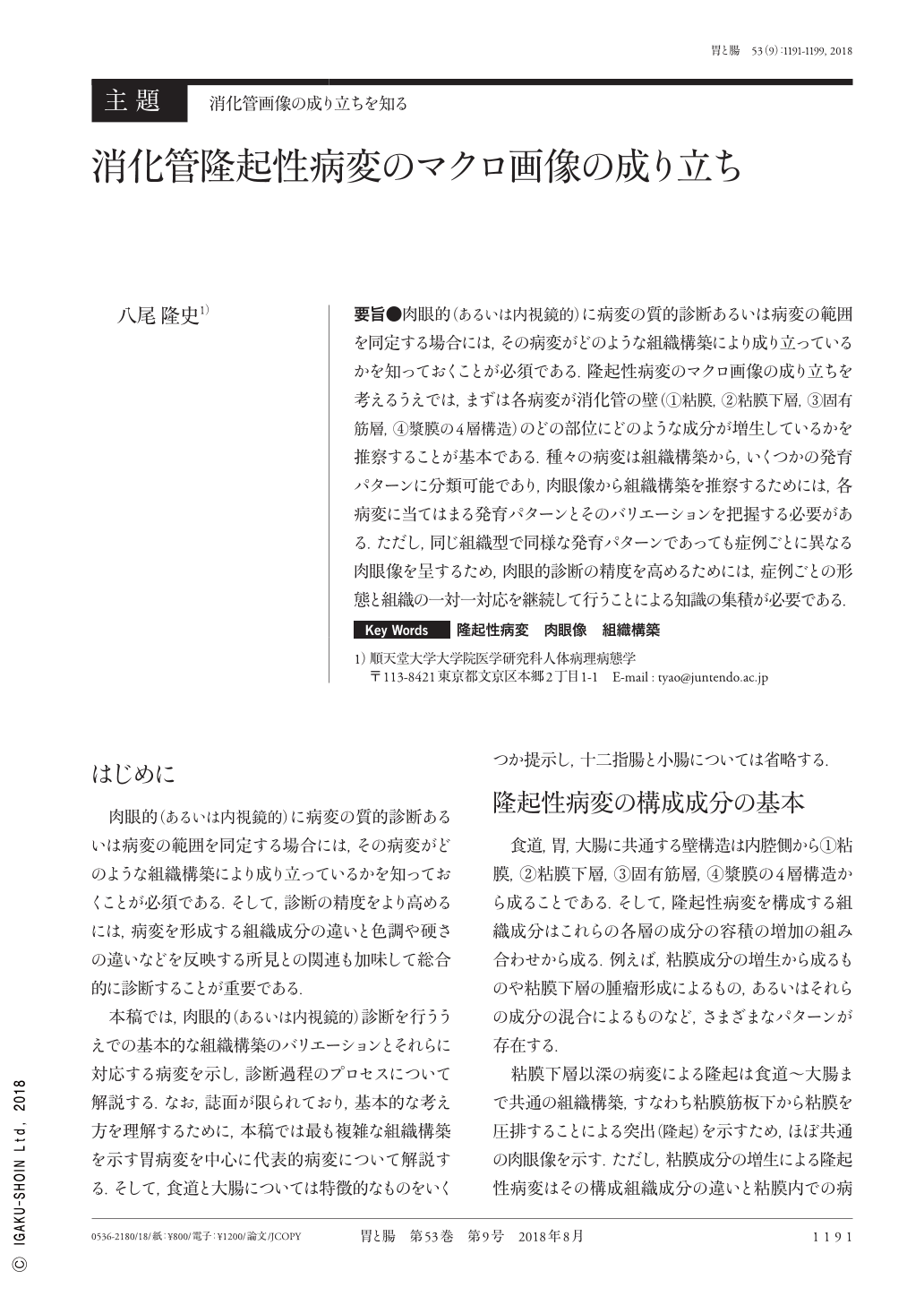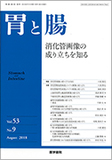Japanese
English
- 有料閲覧
- Abstract 文献概要
- 1ページ目 Look Inside
- 参考文献 Reference
- サイト内被引用 Cited by
要旨●肉眼的(あるいは内視鏡的)に病変の質的診断あるいは病変の範囲を同定する場合には,その病変がどのような組織構築により成り立っているかを知っておくことが必須である.隆起性病変のマクロ画像の成り立ちを考えるうえでは,まずは各病変が消化管の壁(①粘膜,②粘膜下層,③固有筋層,④漿膜の4層構造)のどの部位にどのような成分が増生しているかを推察することが基本である.種々の病変は組織構築から,いくつかの発育パターンに分類可能であり,肉眼像から組織構築を推察するためには,各病変に当てはまる発育パターンとそのバリエーションを把握する必要がある.ただし,同じ組織型で同様な発育パターンであっても症例ごとに異なる肉眼像を呈するため,肉眼的診断の精度を高めるためには,症例ごとの形態と組織の一対一対応を継続して行うことによる知識の集積が必要である.
When diagnosing a lesion macroscopically or endoscopically, it is imperative to determine the correlation between its macroscopic characteristics and histological architecture. It is essential to elucidate which component is increasing in any part of the gastrointestinal wall(e.g., mucosa, submucosal layer, intrinsic muscle layer, and serosa)in each lesion with respect to the formation of a protuberant lesion. Each lesion can be classified into several growth patterns. Moreover, it is necessary to understand the growth pattern and its variation that applies to each lesion to estimate the histological structure using the macroscopic image. However, even the same histological type of lesions with similar growth patterns exhibits variable macroscopic images. Overall, accumulated evidence of one-to-one comparison between the histological architecture and macroscopic images of each case is warranted to enhance the precision of macroscopic diagnosis.

Copyright © 2018, Igaku-Shoin Ltd. All rights reserved.


